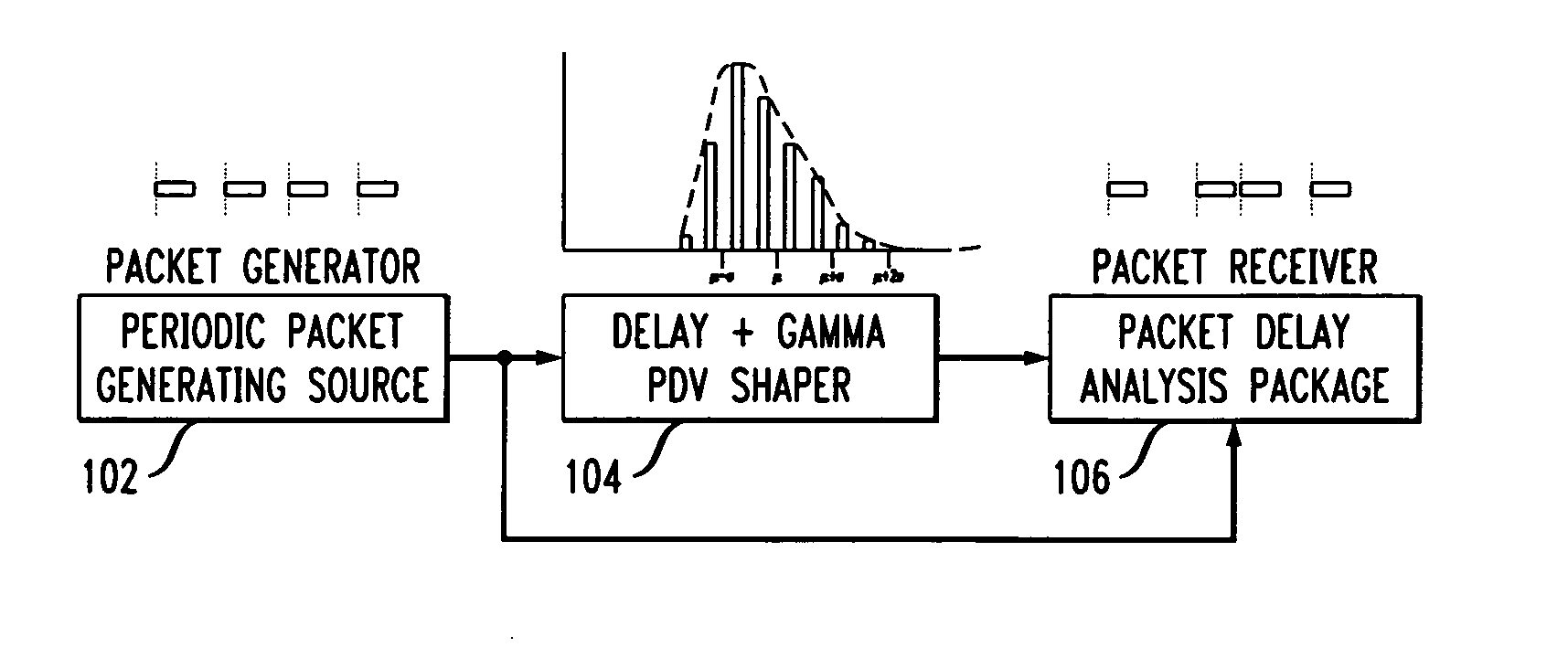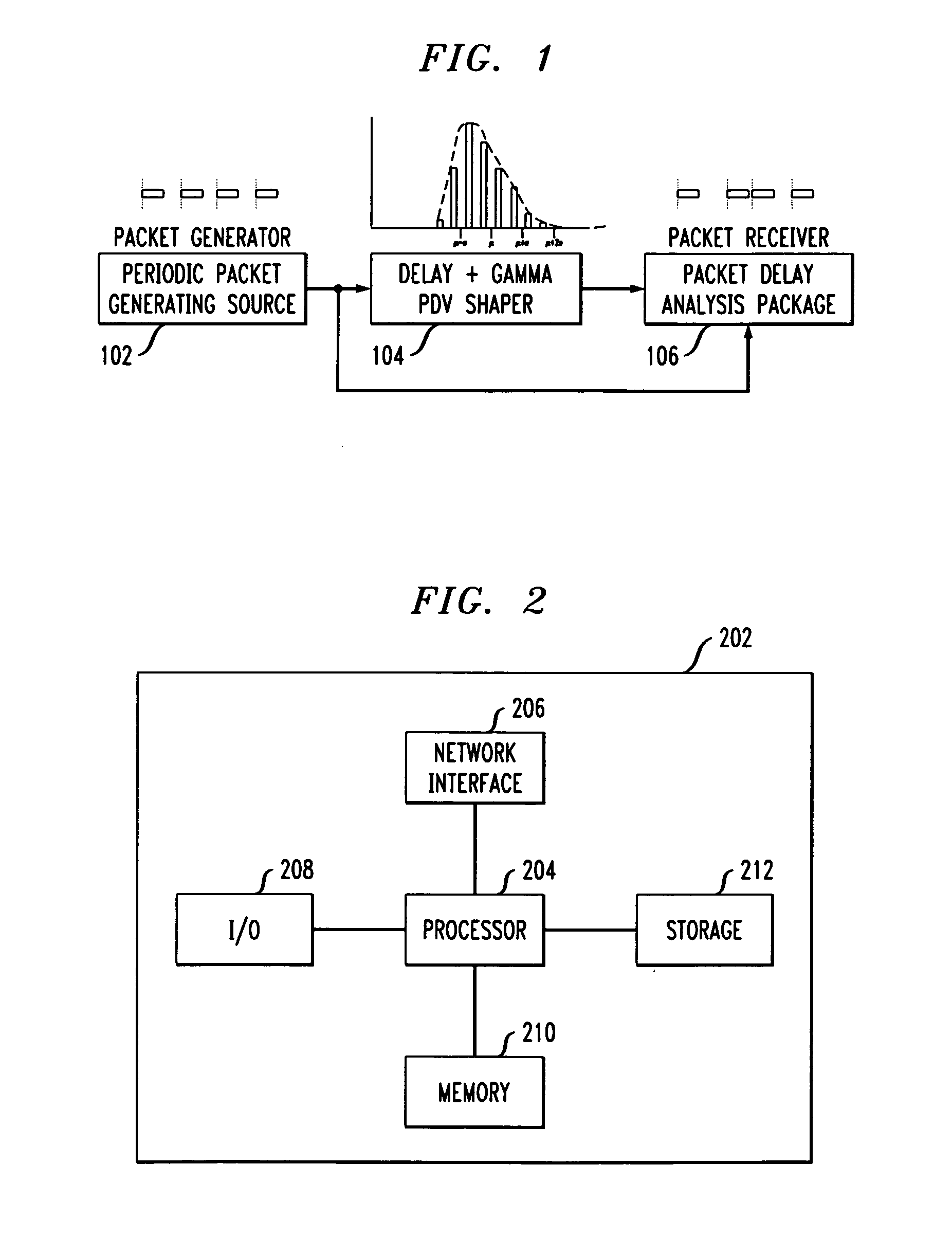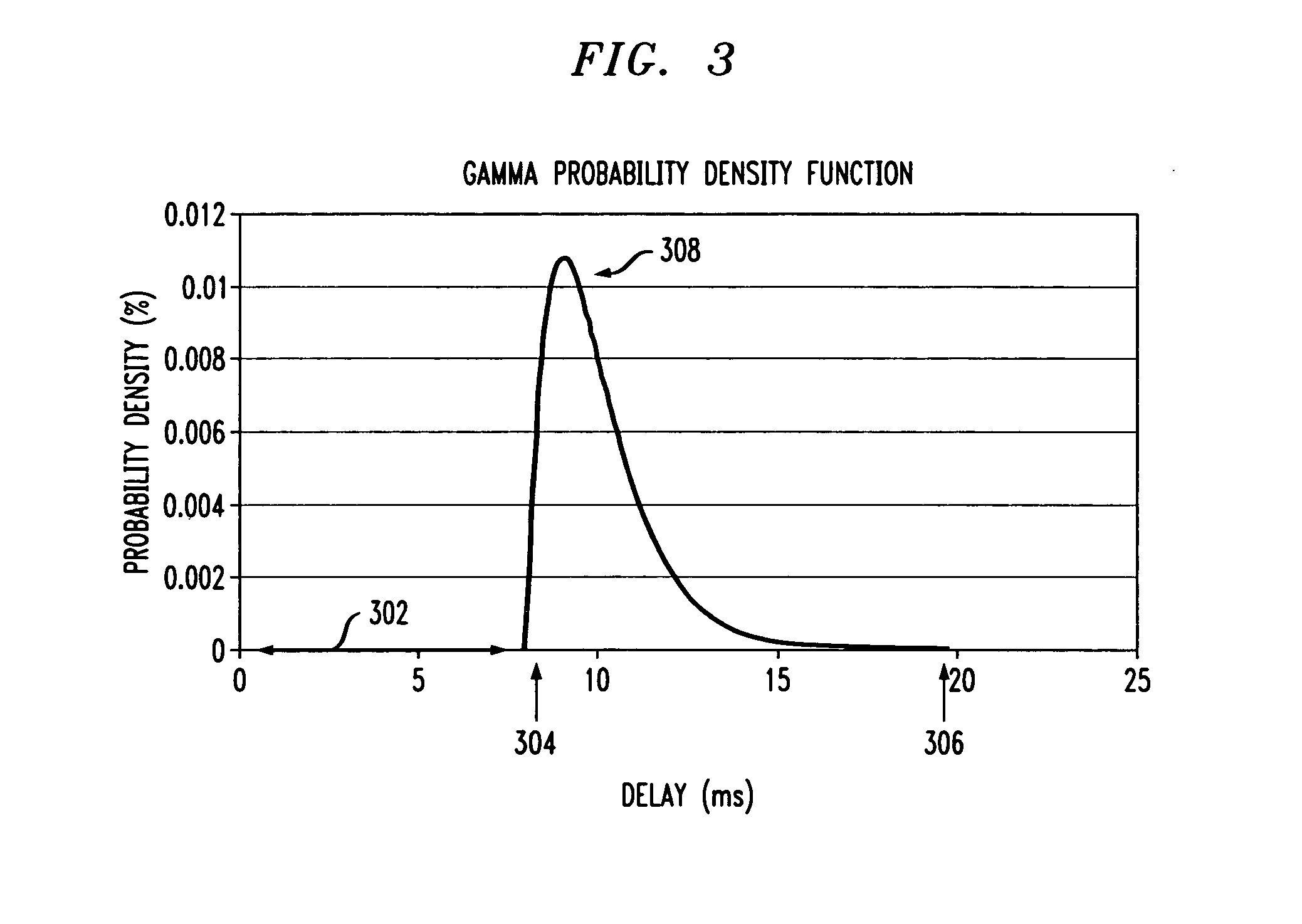Simulating packet delay variation using step-target delay method
- Summary
- Abstract
- Description
- Claims
- Application Information
AI Technical Summary
Problems solved by technology
Method used
Image
Examples
Embodiment Construction
[0020]The present invention is directed to simulating packet delay variation (PDV) using a delay-step method. Embodiments of the present invention describe a framework for establishing metrics that can be used for generating the PDV for packet timing recovery stress testing.
[0021]PDV over a significant number of packet delay measurements can be described as having a Gaussian or normal distribution. This practice stems from the central limit theory that states that the distribution of a large number of samples tends to follow a normal distribution. Based on these assumptions, it has been common practice to evaluate packet timing systems using PDV based on a Gaussian probability density function (PDF). However, the choice of a simple Gaussian PDV PDF based on the central limit theory may not be a realistic representation of packets flowing in loaded multi-switch networks. When individual packets traverse active switching elements (packet switches and routers), they experience delays b...
PUM
 Login to View More
Login to View More Abstract
Description
Claims
Application Information
 Login to View More
Login to View More - R&D
- Intellectual Property
- Life Sciences
- Materials
- Tech Scout
- Unparalleled Data Quality
- Higher Quality Content
- 60% Fewer Hallucinations
Browse by: Latest US Patents, China's latest patents, Technical Efficacy Thesaurus, Application Domain, Technology Topic, Popular Technical Reports.
© 2025 PatSnap. All rights reserved.Legal|Privacy policy|Modern Slavery Act Transparency Statement|Sitemap|About US| Contact US: help@patsnap.com



